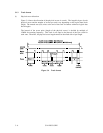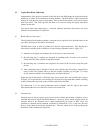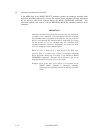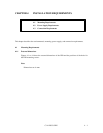C141-E035-01EN3 - 12
3.3 Defect Management
3.3.1 Defect list
Information of the defect location on the disk is managed by the defect list. The following are
defect lists which the IDD manages.
• P list (Primary defect list): This list consists of defect location information available at the
disk drive shipment and is recorded in a system space. The defects in this list are
permanent, so the INIT must execute the alternate block allocation using this list when
initializing the disk.
• D list (Data defect list): This list consists of defect location information specified in a
FORMAT UNIT command by the INIT at the initialization of the disk. This information
is recorded in the system space of the disk drive as the G list. To execute the alternate
block allocation, the FORMAT UNIT command must be specified.
• C list (Certification defect list): This list consists of location information on defective
blocks which are detected by the verifying operation (certification) of the data block after
the initiation when executing the FORMAT UNIT command. The IDD generates this
information when executing the FORMAT UNIT command, and the alternate block
allocation is made upon the defective block. This information is recorded in the system
space of the disk drive as the G list.
• G list (Growth defect list): This list consists of defective logical data block location
information specified in a REASSIGN BLOCKS command by the INIT, information on
defective logical data blocks assigned alternate blocks by means of IDD automatic
alternate block allocation, information specified as the D list, and information generated as
the C list. They are recorded in the system space on the disk drive.
The INIT can read out the contents of the P and G lists by the READ DEFECT DATA command.
3.3.2 Alternate block allocation
The alternate data block is allocated to a defective data block (= sectors) in defective sector
units by means of the defect management method inside the IDD.
The INIT can access all logical data blocks in the user space, as long as there is no error.
Spare sectors to which alternate blocks are allocated can be provided in either "spare sectors in
a cylinder" or "alternate cylinders". See Subsection 3.1.2 for details.
The INIT can specify the size and area for spare sectors by the MODE SELECT command at
the time of the initialization of the disk.
Both of the following are applicable to the alternate block allocation.
• Sector slip treatment: Defective sectors are skipped and the logical data block
corresponding to those sectors is allocated to the next physical sectors. This treatment is
made on the same cylinder as the defective sector's and is effective until all spare sectors in
that cylinder are used up.


















